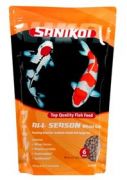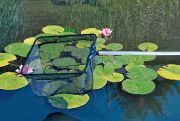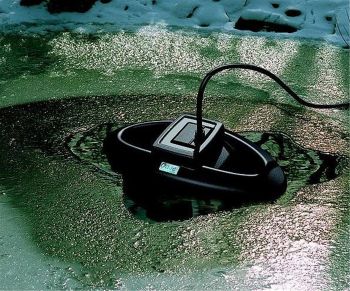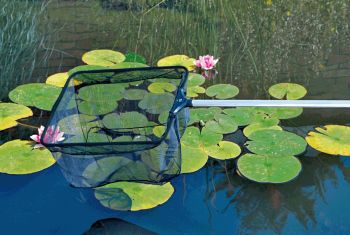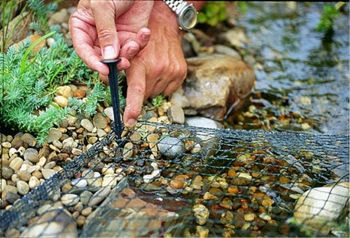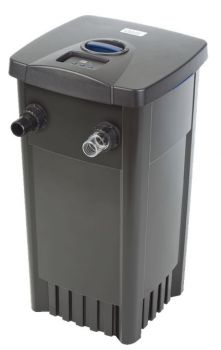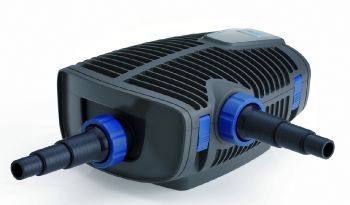Winter Pond Care Tips
Winter can be a stressful season for pond fish as water temperatures drop into the minuses leaving them vulnerable as their bodily functions slow down to cope with the colder conditions. There are a few key things a pond owner can do at this time of the year to minimise this stress and provide an environment that is slightly more comfortable for fish and other pond life during the harsher periods the Winter can produce, helping to ensure a swift and steady return to action come Spring.
Ice Prevention.
Keep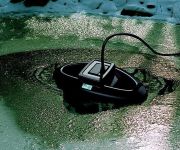 ing an area of the pond surface free from ice over the winter will allow toxic natural gasses to escape the pond, preventing these from becoming trapped under the surface of the ice layer and potentially poisoning the fish over the winter.
ing an area of the pond surface free from ice over the winter will allow toxic natural gasses to escape the pond, preventing these from becoming trapped under the surface of the ice layer and potentially poisoning the fish over the winter.
A small ice-free zone will also allow Oxygen to enter the pond so the fish will not be made to survive on the limited Oxygen resources available in completely frozen conditions. Snow should also be removed from an icy pond surface to allow some light penetration through the ice.
An effective way of maintaining this open area is to install a pond heater such as the IceFree Thermo which heats the surrounding water enough to prevent it freezing when the rest of the pond surface succumbs to the freezing conditions.
Low Protein Feed.
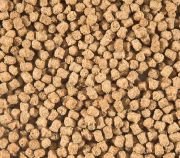 In preparation for Winter, pond fish will have been feeding on a high protein diet, building up fat reserves to see them through the colder periods when their metabolism slows down and they can no longer digest protein rich foods.
In preparation for Winter, pond fish will have been feeding on a high protein diet, building up fat reserves to see them through the colder periods when their metabolism slows down and they can no longer digest protein rich foods.
If you continue to introduce feed throughout the colder periods, high protein feed should not be used as the fish cannot process this diet during Winter and continual protein introduction will lead to fish health and water quality issues as the bulk of these nutrients goes to waste, either being rejected by the fish and decomposing or sitting undigested within the gut of the fish, leading to potentially serious health issues.
A wheat germ based fish food such as SaniKoi All-Season Wheat Germ is a more appropriate feed in colder water as this is formulated to be more digestible in colder temperatures due to the high wheat content and lack of protein rich fishmeal content.
If the fish are looking to feed but are reluctant to rise from the warmer lower water layers to take floating pellets, a sinking wheat-based feed such as SaniKoi Winter Wheat Fish Food may be more readily accepted. This fish food contains very little protein and the small 3mm pellets make this highly digestible in temperatures when other fish foods are not.
Planting Maintenance.
 During the Winter, most aquatic plants such as lilies will die off, shedding their leaves so that only the root bulk remains ready to re-sprout in the spring. It is important that dead plant matter is removed from the pond so that it does not sink to the bottom and decompose. Dead or dying leaves and stems should be pruned before they break away and sink, a tool such as the FlexiCut 2-in-1 Pond Scissors makes light work of such tasks.
During the Winter, most aquatic plants such as lilies will die off, shedding their leaves so that only the root bulk remains ready to re-sprout in the spring. It is important that dead plant matter is removed from the pond so that it does not sink to the bottom and decompose. Dead or dying leaves and stems should be pruned before they break away and sink, a tool such as the FlexiCut 2-in-1 Pond Scissors makes light work of such tasks.
Floating debris such as dead plants and leaf litter should also be removed from the pond surface to prevent it sinking to the pond floor and releasing harmful gasses as decomposition sets in. Effective pond surface debris removal be achieved by installing a Floating Pond Skimmer to continually draw floating items off the pond surface, or manual removal of floating debris can be carried out using a large long handled pond net such as the Profi Pond Net. Falling leaves can also be prevented from entering the pond by installing a Surface Cover Net to intercept falling leaf litter.
Filtration and UV Reduction.
 In Winter, UV is not required due to the low water temperatures, so the ultraviolet clarifier can be switched off and disconnected from the power supply to preserve the life of the UV lamp. If the UV can be disconnected from the pond filter system, this should be drained of all water and stored somewhere dry and warm to prevent frost damage. Filtration is also less important due to the lack of biological processes occurring over the winter period so this too can be removed and stored to prevent frost damage. Filters such as the OASE FiltoMatic CWS feature an intelligent UV that will switch itself off automatically when the temperature dictates that it is not required, ideal if you choose not to remove your filter over Winter.
In Winter, UV is not required due to the low water temperatures, so the ultraviolet clarifier can be switched off and disconnected from the power supply to preserve the life of the UV lamp. If the UV can be disconnected from the pond filter system, this should be drained of all water and stored somewhere dry and warm to prevent frost damage. Filtration is also less important due to the lack of biological processes occurring over the winter period so this too can be removed and stored to prevent frost damage. Filters such as the OASE FiltoMatic CWS feature an intelligent UV that will switch itself off automatically when the temperature dictates that it is not required, ideal if you choose not to remove your filter over Winter.
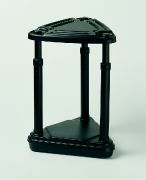 Many pond keepers will continue to operate the pond filter system over Winter and this can be very beneficial. The filter pump will create an area of slightly warmer water immediately surrounding it and can provide an area of more comfort for fish in the coldest periods. The pump can be raised up off the bottom of the pond on a Pond Pump Stand allowing the fish to congregate in the warmer water beneath. If you are running a pond aerator, this can also be kept in operation over Winter to keep oxygen levels high and assist in keeping areas free from ice. If you choose not to run your aerator over Winter, this should be stored inside to prevent frost damage.
Many pond keepers will continue to operate the pond filter system over Winter and this can be very beneficial. The filter pump will create an area of slightly warmer water immediately surrounding it and can provide an area of more comfort for fish in the coldest periods. The pump can be raised up off the bottom of the pond on a Pond Pump Stand allowing the fish to congregate in the warmer water beneath. If you are running a pond aerator, this can also be kept in operation over Winter to keep oxygen levels high and assist in keeping areas free from ice. If you choose not to run your aerator over Winter, this should be stored inside to prevent frost damage.
 The filter outlet back to the pond can also maintain an ice free area as the water is in constant motion in this area of the pond. The flow from the pump can be reduced during Winter as the required rate of water circulation is not as high as it would be in the Summer. Filter pumps such as the OASE Aquamax Eco Premium 16000 feature a seasonal flow control facility which will automatically reduce the motor speed as the temperature drops, saving on power usage costs and minimising physical pond maintenance efforts.
The filter outlet back to the pond can also maintain an ice free area as the water is in constant motion in this area of the pond. The flow from the pump can be reduced during Winter as the required rate of water circulation is not as high as it would be in the Summer. Filter pumps such as the OASE Aquamax Eco Premium 16000 feature a seasonal flow control facility which will automatically reduce the motor speed as the temperature drops, saving on power usage costs and minimising physical pond maintenance efforts.
For more information on caring for your pond throughout the year, please feel free to contact us at Water Garden by phone on 02392 373735 or by email via our contact page. We are always happy to assist.

